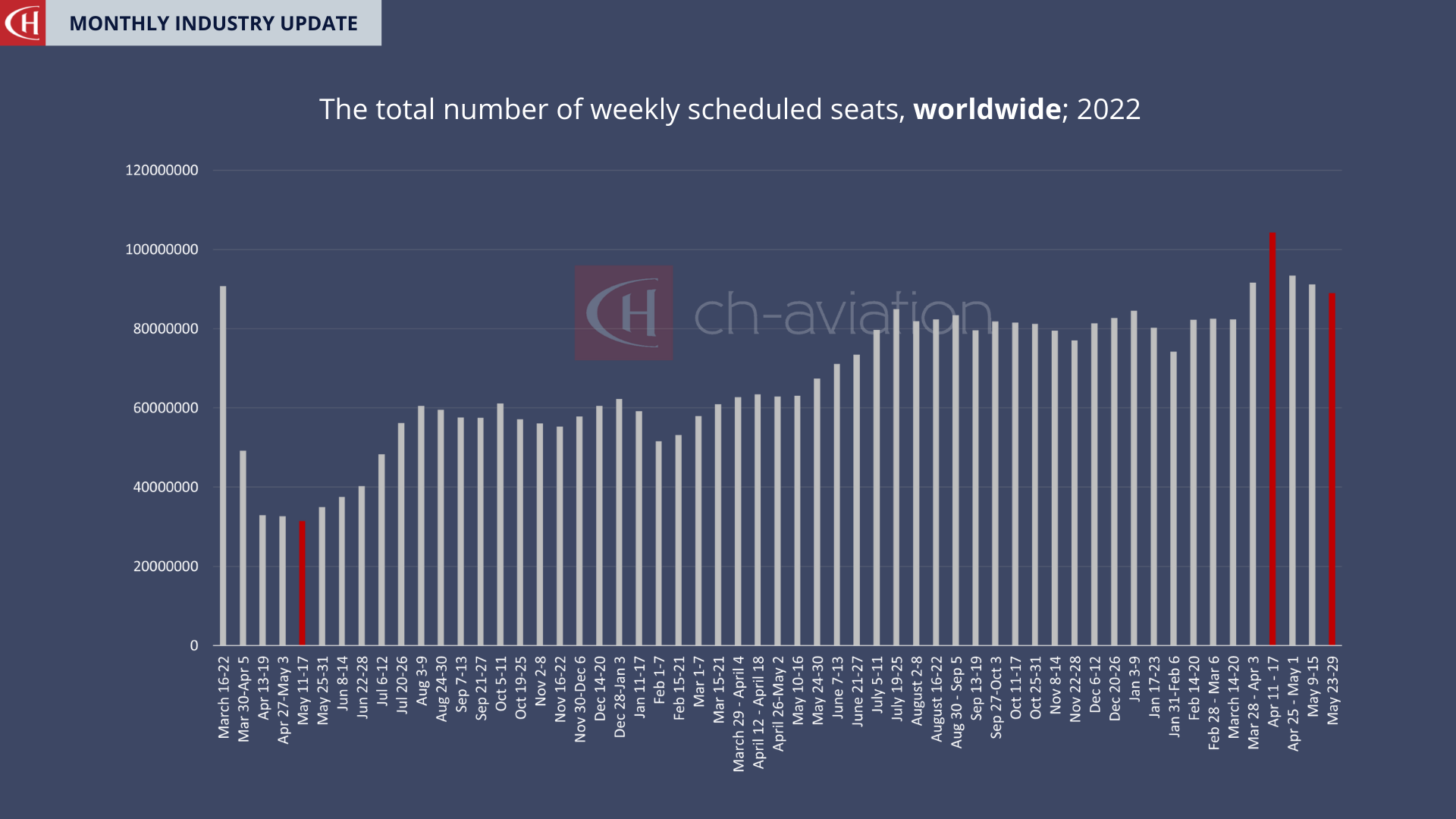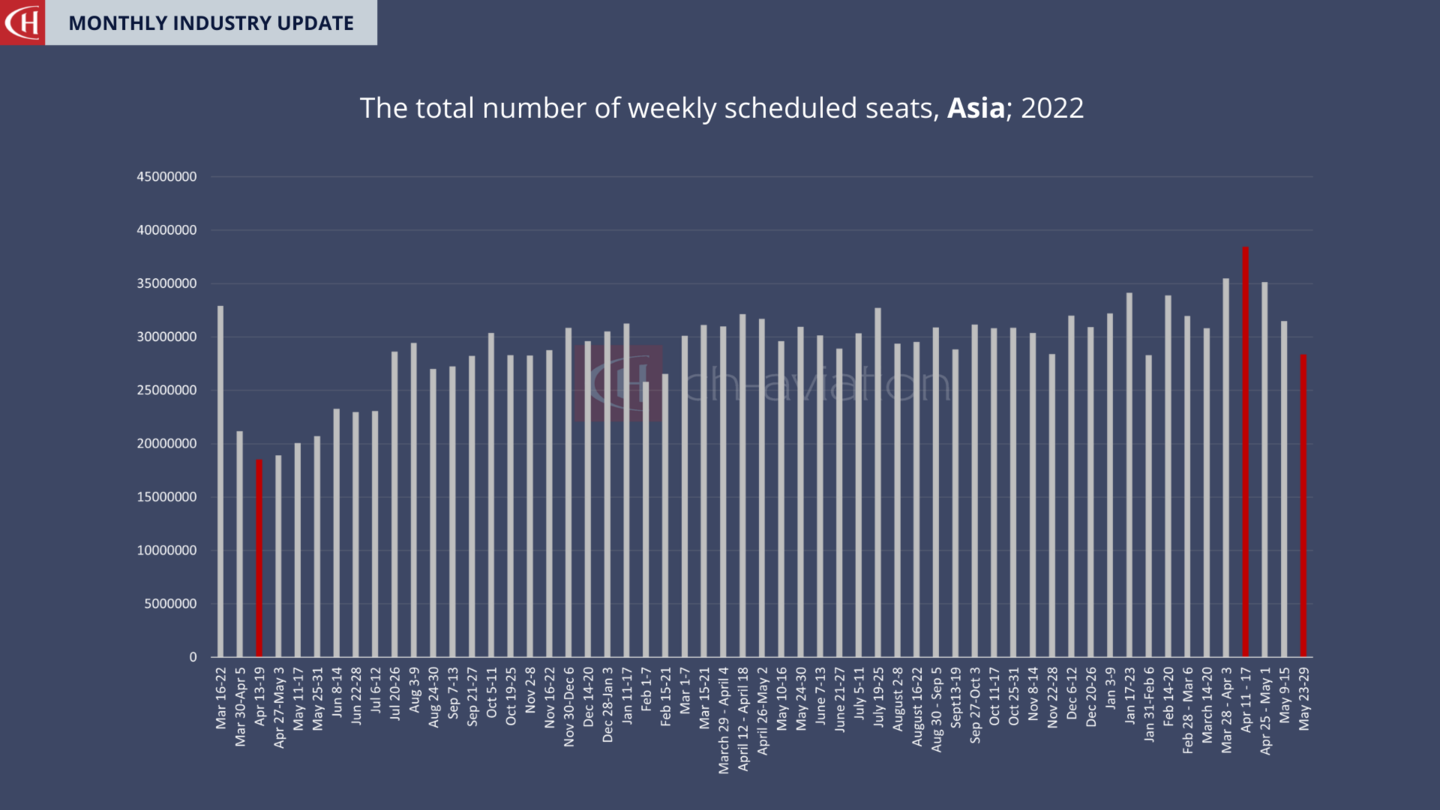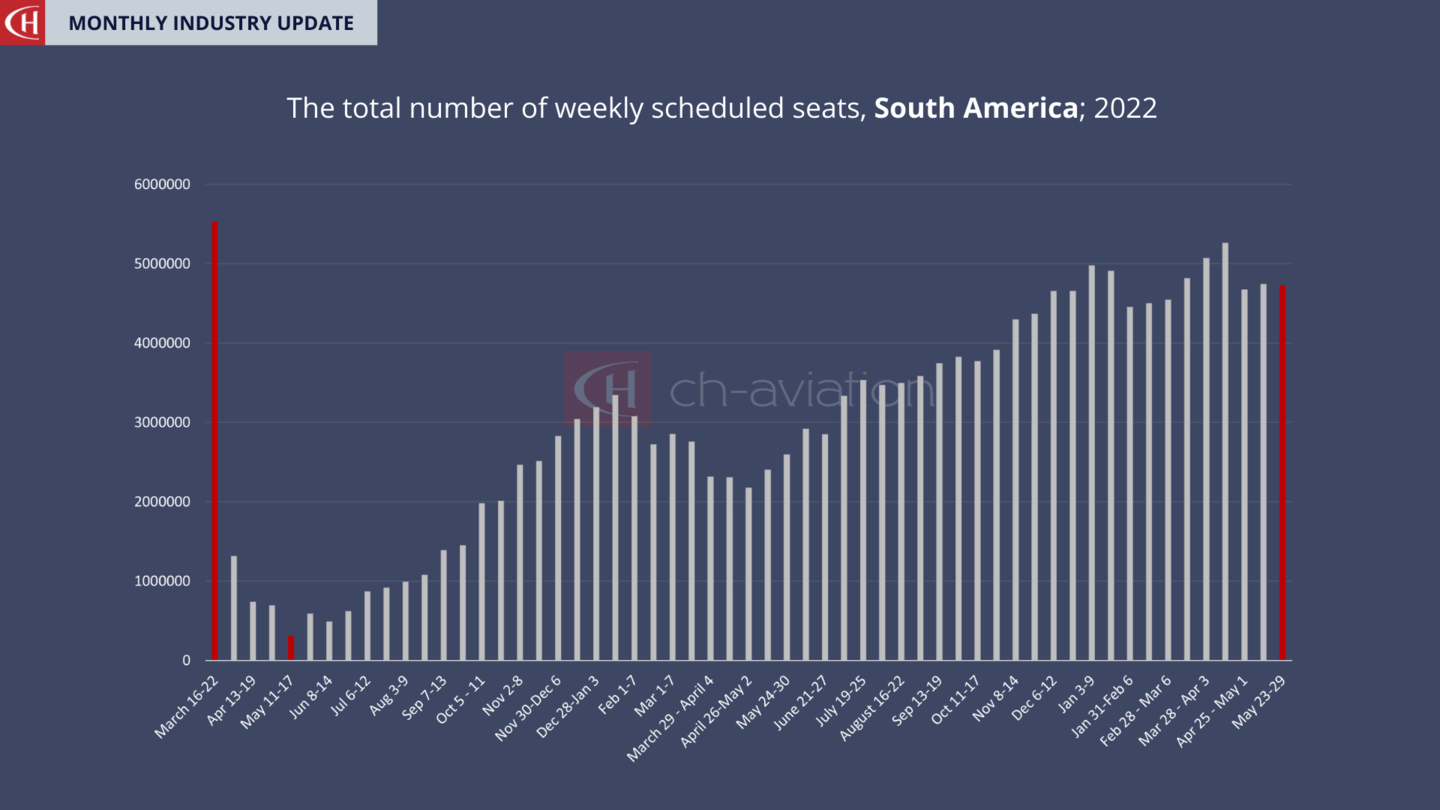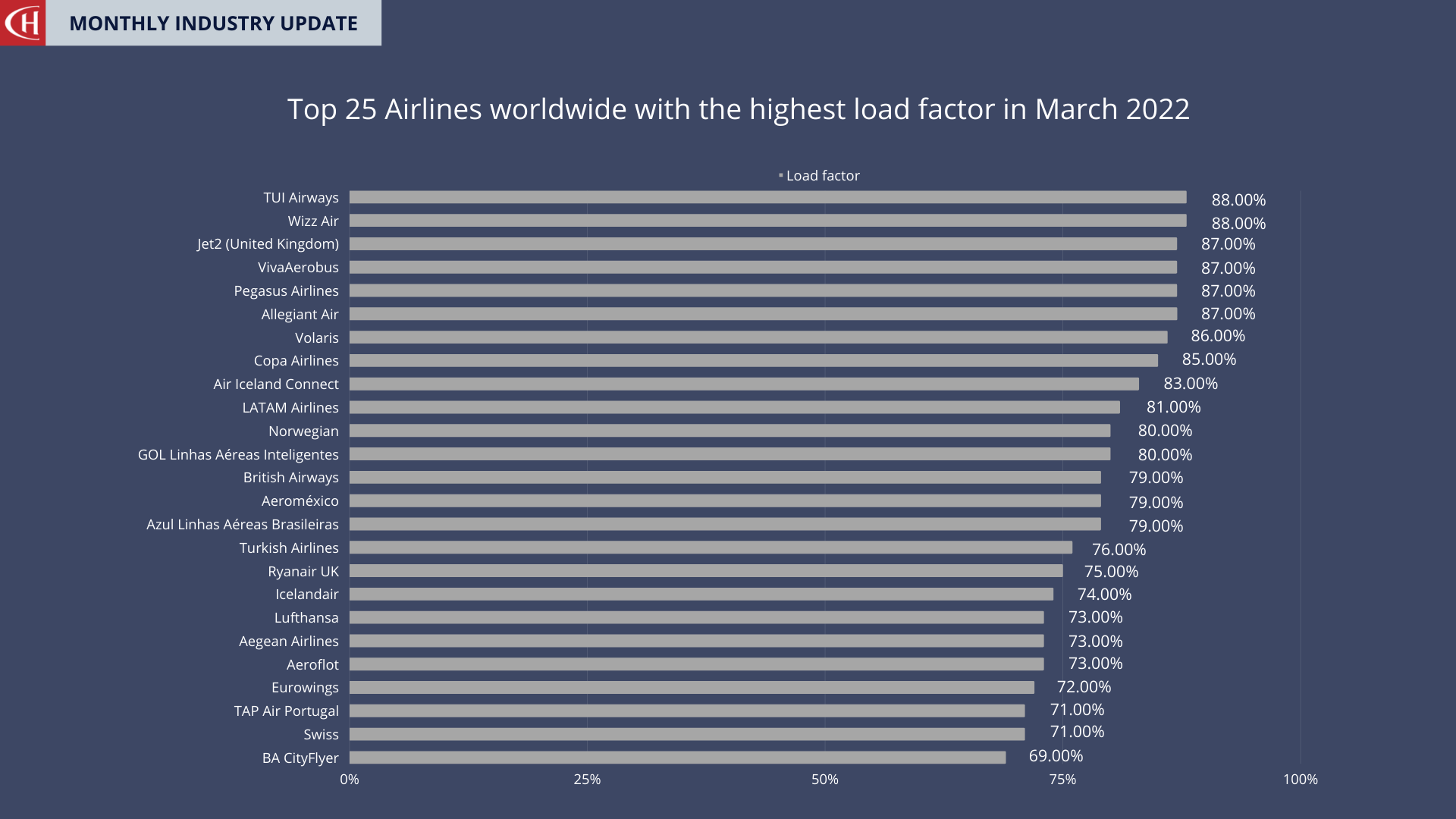Following the post-Covid era’s highest capacity figures in mid-April (104.2 million planned seats), worldwide capacity has now declined. The end of May stood at 88.9 million scheduled seats, a 32% increase on May 2021 and a staggering 155% increase compared to May 2020.

Africa‘s capacity has been in the decline after reaching a peak in mid-April. It currently counts 2.8 million weekly scheduled seats, a 61% increase over May 2021 and a remarkable 280% increase over May 2020.

After peaking in mid-April with 38.4 million scheduled seats, Asia has seen a significant drop and now has 28.3 million scheduled seats. This is an 8% decline from May 2021, but a 37% increase on May 2020.

Europe as well experienced a peak in mid-April, followed by a decline. However, 25.6 million seats are scheduled for the end of May which is a 136% increase over the end of May 2021 and a massive 305% increase over May 2020.

In North America, we are witnessing the same situation. Following a considerable drop after hitting a peak in mid-April, capacity levels have now stagnated. North America now has 25.1 million planned seats, a 30% increase over May 2021 and a giant 311% increase over May 2020.

Since mid-April, Oceania‘s capacity figures have also dropped, with 2.1 million seats currently scheduled. This represents an 18% increase over the same period last year and a massive 416% increase over May 2020 figures.

South America’s capacity remained stable in May, with 4.72 million seats scheduled. Compared to the same period last year, we see an 82% increase and an incredible 702% increase compared to May 2020.

Based on the passenger data we’ve gathered, we’ve compiled a list of the Top 25 airlines worldwide with the highest load factors for March 2022. TUI Airways leads the list with a load factor of 88.00% while Mandarin Airlines is at the bottom, with just 12.00%.

The recent update on the worldwide capacity is available here.
For more interesting analyses, follow our LinkedIn page.



